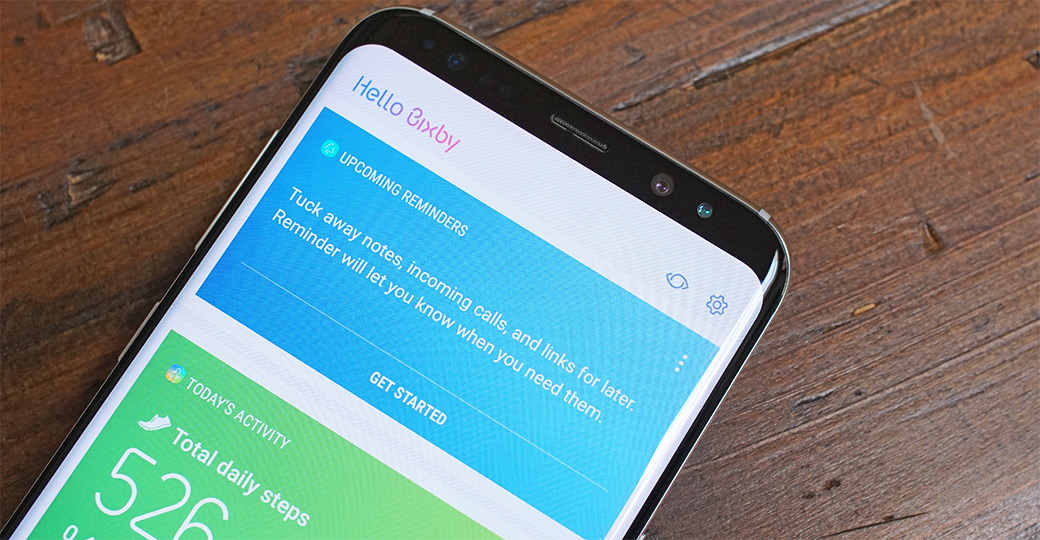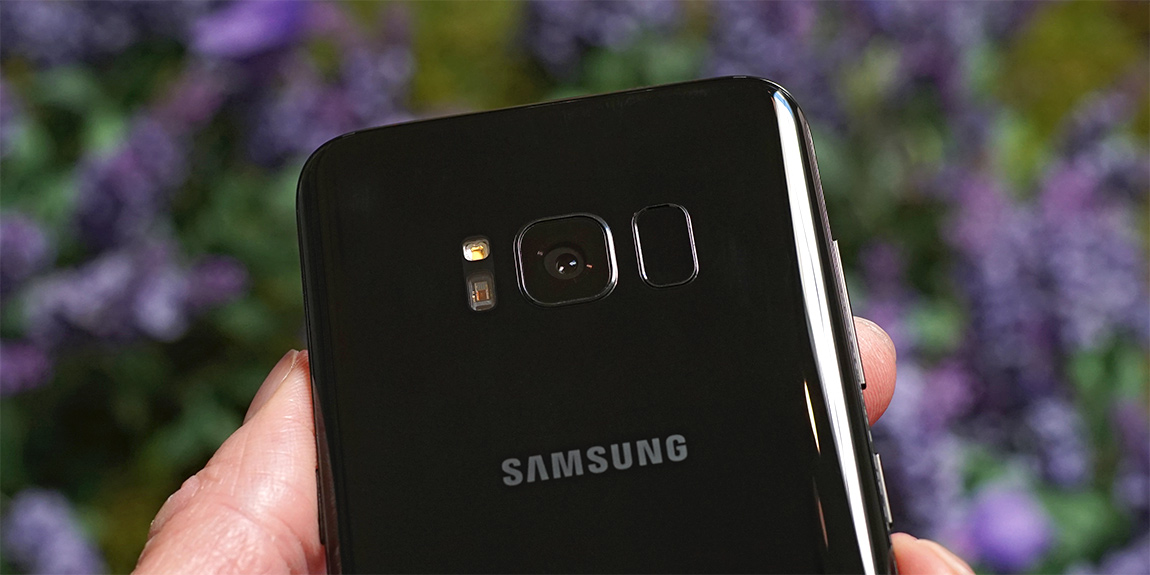Samsung Galaxy S8 Showdown: Exynos 8895 vs. Snapdragon 835, Performance & Battery Life Tested
by Matt Humrick on July 28, 2017 8:00 AM EST- Posted in
- Smartphones
- Samsung
- Galaxy
- Mobile
- SoCs
- Snapdragon 835
- Exynos 8895
- Galaxy S8
Final Words
Any discussion about the Galaxy S8’s performance begins with its two SoCs, which have some things in common, but a lot more differentiating the two. At a low level, both are built on the same Samsung 10nm LPE process. But past that, what the chip designers at Qualcomm and Samsung LSI built with that process are at times very different.
In terms of processing elements, the Snapdragon 835 uses four semi-custom Cortex-A73 CPU cores for its big cluster, while the Exynos 8895 employs four of Samsung’s custom M2 cores. Our lower-level tests show almost no overall difference in integer IPC between the two CPU cores, with each microarchitecture showing a small advantage in a few, very specific workloads. The M2 in the E8895 delivers better overall floating-point IPC, but on the whole there is not a big difference in CPU performance between the S835 and E8895, thanks to their similar IPCs and clockspeeds.
Focusing solely on the hardware’s capabilities ignores a vital piece of the puzzle, however. Software plays an important role too, particularly the parameters that control a phone’s CPU scheduling and DVFS systems. OEMs fine tune these parameters to find the right balance between performance, power consumption, and thermal limits. It’s only when running system-level tests such as PCMark, which runs more realistic workloads that use standard Android API calls, where these effects become evident and where we see a noticeable difference in performance between the two S8 models. The S835 S8 performs almost 30% better than the E8895 model overall in PCMark, with a 49% advantage in the Writing test where thread migration between the little and big clusters plays a prominent role. The storage performance of our E8895 S8 sample, which came with Samsung UFS 2.1 NAND, was significantly better than our S835 S8’s Toshiba UFS 2.0 NAND, however.
When it comes to running apps, the E8895 S8’s performance is comparable to last year’s flagships, while the S835 S8 is among the fastest currently available. There’s another aspect of performance, though, that’s more difficult to measure: user interface responsiveness and fluidity. This is an area where Galaxy phones have struggled in the past. I only had access to the E8895 S8 for a brief period (all of which was used for testing and collecting data), and I did not have the S835 model at the same time for a side-by-side comparison, so I’ll reserve my subjective opinion about UI performance to the S835 model. Overall I found it to be very fluid. Not quite as smooth as Google’s Pixel, but noticeably better than the Galaxy S7 (S820), which never felt as fast as some of its peers. The S835 S8’s performance perfectly mirrors the smooth and fluid design of its chassis.
Both models deliver excellent graphics performance, although the E8895 model and its 20-core Mali-G71 GPU is a little faster in most workloads. The flipside is that the S835 model’s Adreno 540 offers much better efficiency, prolonging battery life by an extra hour in our GFXBench Manhattan ES 3.1 battery test.
Peak performance is good for bragging rights, but what really matters when playing the most demanding games is sustained performance. Interestingly, both S8 models deliver the same steady-state performance after throttling GPU frequency to stay within their thermal limits. While neither SoC can maintain peak frequency for very long, sustained performance is still excellent, which is important if you want to use the S8 with Samsung's Gear VR system.
Battery life has also improved significantly from the S7 to the S8, even though there’s been no change in battery capacity. This comes thanks in large part to Samsung's 10nm LPE process, which has allowed chip designers to rebalance their designs to curtail power consumption while still offering a modest performance increase. Overall Samsung has definitely improved overall efficiency for this generation, however the S835 model has a clear advantage over the E8895 S8. This is particularly obvious when looking at GPU power consumption.
If you’re upgrading from a previous Android or Galaxy phone, especially one that predates the S7, the Galaxy S8’s performance and battery life will not disappoint, no matter which SoC is used. Between these two, however, across all of the tests I've run, the S835 model is certainly the better of the two in terms of those metrics.












137 Comments
View All Comments
goatfajitas - Friday, July 28, 2017 - link
/edit - buy what suits youzodiacfml - Friday, July 28, 2017 - link
It is not that big. The "taller" aspect ratio exaggerates the diagonal. To the article, the 10nm SoC now seems more valuable than benchmarks/reviews I've seen from other sites. Since the Pixel is going to be expensive, taller, no storage expansion and without a headphone jack, I have no ideal phone yet this year. The Mi Mix 2 or the LG V30 might.philehidiot - Saturday, July 29, 2017 - link
Just as a side point, I went from a HTC M9 to an S8. I tried and tested the S8 and S8+. Bear in mind I have small hands to the point where I also pack a pair of socks to compensate. If you're American or not quite so crude that means I prefer a 9mm to a .45. I found the elongated screen of the S8 to be just about tolerable and the advantages for multitasking do outweigh the occasional situation where I need to reach the far end of the screen and can't do it. I suspect most people with normal hands will find the S8 to be perfectly fine from a usability standpoint. Certainly the S8+ I would strongly recommend you try a live model before you buy and perhaps consider waiting for the new Note if big screens are your bag.As for the carrying something that big you haven't heard the worst of it. It's well built - teardowns show this. Equally it's still made of glass for crying out loud. You NEED a case (and what's the point in making something so aesthetically amazing when you have to cover it??!!) and not a light one either. I have a leather fold out case which allows me to watch stuff on the phone at an angle and also takes some cards. Interestingly, it has two magnets right next to where the cards live. I got locked out of my hotel room due to this. Regardless, the necessary beef and size of case required to protect such a fragile device means the size is doubled. If HTC had continued down the metal line I'd have gone with them but it's all about bloody glass these days and I'm sick of it.
Tttimothy2355 - Friday, July 28, 2017 - link
Apple stocks galaxy awesomesyxbit - Friday, July 28, 2017 - link
>>"Our initial look at Snapdragon 835 revealed that its Kryo 280 performance cores are loosely based on ARM’s Cortex-A73 while the efficiency cores are loosely based on the Cortex-A53"Why would you write such a blatant lie. It's not LOOSELY based at all. It's >95% the same chip. QCOM have made minor tweaks just to be able to market it as their own design.
tipoo - Friday, July 28, 2017 - link
Where would the A10 fall on the ratio/GHz chart I wonder?http://images.anandtech.com/graphs/graph11540/sams...
name99 - Friday, July 28, 2017 - link
We can guess.You can see the A9 results here:
http://www.anandtech.com/show/9686/the-apple-iphon...
Eyeballing it, they are on average about 1.5x the current A73 results.
A10 results are about 50% faster again, while running at the same frequency as the CPUs referenced in the article, so basically about twice the IPC of the current A73 crop of champions.
One thing that stands out in comparing the SPEC results across all these devices is the massive jump in 175.vpr. A9 (which, like I said, is at around 1.5x for most results) has a value of 2017. This is about in line with what we see for Snapdragon 821. Then we get these massively (2x larger than I'd expect) scores for the other high-end ARM cores.
My guess is that something changed in the compiler in the past year or so. (Since the article doesn't say whether gcc or llvm was used, I can't investigate further.) My guess is likewise that this wasn't something nefarious, some "cheat" to make SPEC results look better --- no-one cares about SPEC2000 on ARM64 anyway --- but rather some general improvement in the compiler (perhaps loop unrolling/data placement, but most likely autovectorization) that managed to MASSIVELY improve ARM64 performance on this particular piece of code.
Presumably (if the change is in LLVM...) Apple picks up the same improvement, but sadly we never got to see the A10 SPEC results. Maybe A11?
So summary
- Apple's IPC seems to now be at around 2x ARM competitors for most purposes. (It's at around 1.25x Intel's; but to be fair Intel can clock higher; but to be fair Intel uses more juice)
- something interesting happened to 175.vpr on ARM64 in the past year or so, and if anyone knows, they should speak up!
Nullify - Saturday, July 29, 2017 - link
I was hoping for Anand to do a deep dive on the A10. Perhaps they're saving it for the A11? Should be the first ARM core in the world to break 4,000 single core on Geekbench, making it a full 2X faster than the 8895 or 835. It's truly amazing how much further ahead Apple is.tuxRoller - Saturday, July 29, 2017 - link
How big are those some cores, again?It's not like this is magic, and these companies know his to make very high IPC if you don't care about cost. Apple has built a massive core, and they pay the price in silicon.
ARM, and most of their licensees, are optimizing for silicon area efficiency, not absolute performance.
http://cdn.wccftech.com/wp-content/uploads/2016/10...
Meteor2 - Saturday, July 29, 2017 - link
I think that, as alluded to above, Android and iOS are diverging so much that there's little point comparing Apple IPC to ARM or whoever, you may as well compare it to Power or SPARC.